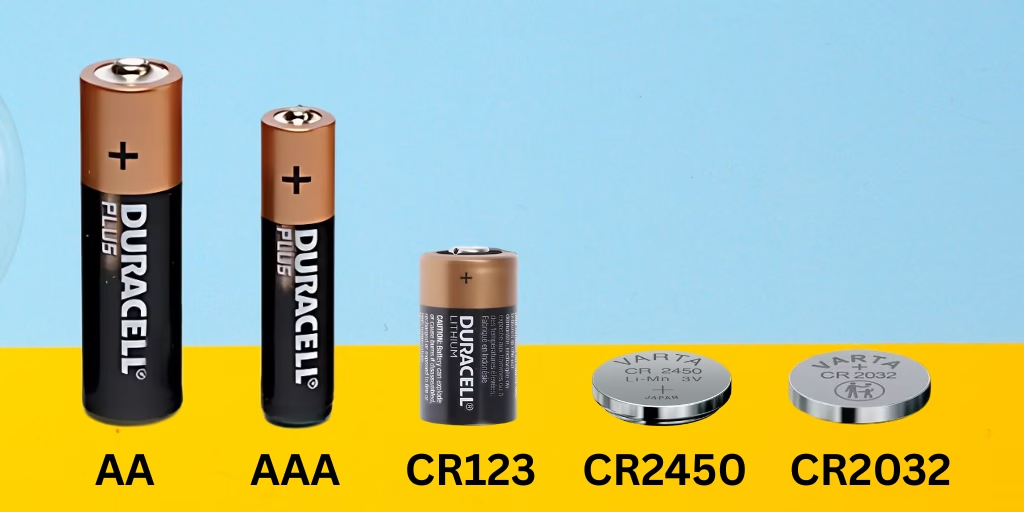Complete Guide to Batteries for Smart Home Devices
As smart home devices become more prevalent ensuring they remain powered is important to keeping your automated smart home running smoothly. While some smart devices are mains powered, many rely on batteries, making it important to choose the right type for longevity, reliability, and safety. Here’s a guide to the batteries most commonly used in smart home tech.
Common Battery Types in Smart Home Devices
AA and AAA Lithium Batteries
- Used in: Outdoor smart devices and devices that have mechanical movement e.g. smart water irrigation timers
- Pros: Expensive, widely available.
- Cons: High capacity and longer lifespan than alkaline alternatives.
- Lifespan: 6 months to 2 years depending on the device and usage.
AA and AAA Alkaline Batteries
- Used in: Motion sensors, contact sensors, and thermostats.
- Pros: Inexpensive, widely available.
- Cons: Lower capacity and shorter lifespan than lithium alternatives.
- Lifespan: 6 months to 2 years depending on the device and usage.
CR123A Lithium Batteries
- Used in: Motion detectors and smoke detectors.
- Pros: High energy density, longer shelf life, reliable in extreme temperatures.
- Cons: More expensive
- Lifespan: Up to 3 years.
Button Batteries (e.g. CR2032, CR2450)
- Used in: Door/window sensors, smart buttons and temperature/humidity sensors
- Pros: Compact and cost-effective
- Cons: Limited capacity, not ideal for frequent or high drain devices.
- CR2032 vs. CR2450: CR2450 is thicker and has a higher capacity, better for slightly more power hungry devices.
- Lifespan: 1 to 2+ years depending on use and quality.
Rechargeable (non removeable) Lithium-ion Batteries (Li-ion)
- Used in: Video doorbells, smart locks, indoor / outdoor cameras.
- Pros: Rechargeable, eco-friendly over time, high capacity.
- Cons: Degrades over time, requires charging setup.
- Lifespan: 1 to 3 years or 300 to 500 charging cycles.
Proprietary Batteries
- Used in: Brand specific smart devices like Ring, Arlo, or Google Nest products.
- Pros: Tailored for the device, optimised for performance.
- Cons: Expensive, replacement often limited to the manufacturer or requires complete replacement.
Things to Watch Out For
- Battery Life Claims: Real world usage may vary significantly from manufacturer estimates.
- Temperature Sensitivity: Cold weather can reduce performance; lithium batteries are better suited for outdoor use.
- Leakage Risk: Use quality brands to avoid damage from leaking alkaline batteries.
- Compatibility: Some devices may require specific battery brands.
- Counterfeit Batteries: Stick to reputable retailers or the original manufacturer.
- Rechargeable Batteries: Generally not recommended as they may not provide sufficient power to the device and can give inaccurate readings on remaining charge
Recommended Battery Brands
- Duracell: Reliable for alkaline and lithium formats.
- Energizer: Known for long life options like Energizer Ultimate Lithium.
- Panasonic: Excellent for coin cells like CR2032 and CR2450.
- Sony / Murata: Trusted for coin cell and specialty batteries.
- Amazon Basics: Budget friendly, good for low power devices.
Conclusion
It’s always advisable to purchase batteries from reputable brands and trusted suppliers. Low cost or counterfeit batteries often have a significantly shorter lifespan meaning batteries are constantly having to be replaced and may pose a safety risk, including a higher chance of overheating or fire, due to poor manufacturing standards.
In most cases, rechargeable batteries (unless built-in by the manufacturer) are not recommended for smart home devices. They provide a lower voltage than required, which can lead to performance issues. Additionally, many sensors struggle to accurately detect the remaining charge in rechargeable cells, potentially leading to unexpected power loss.





